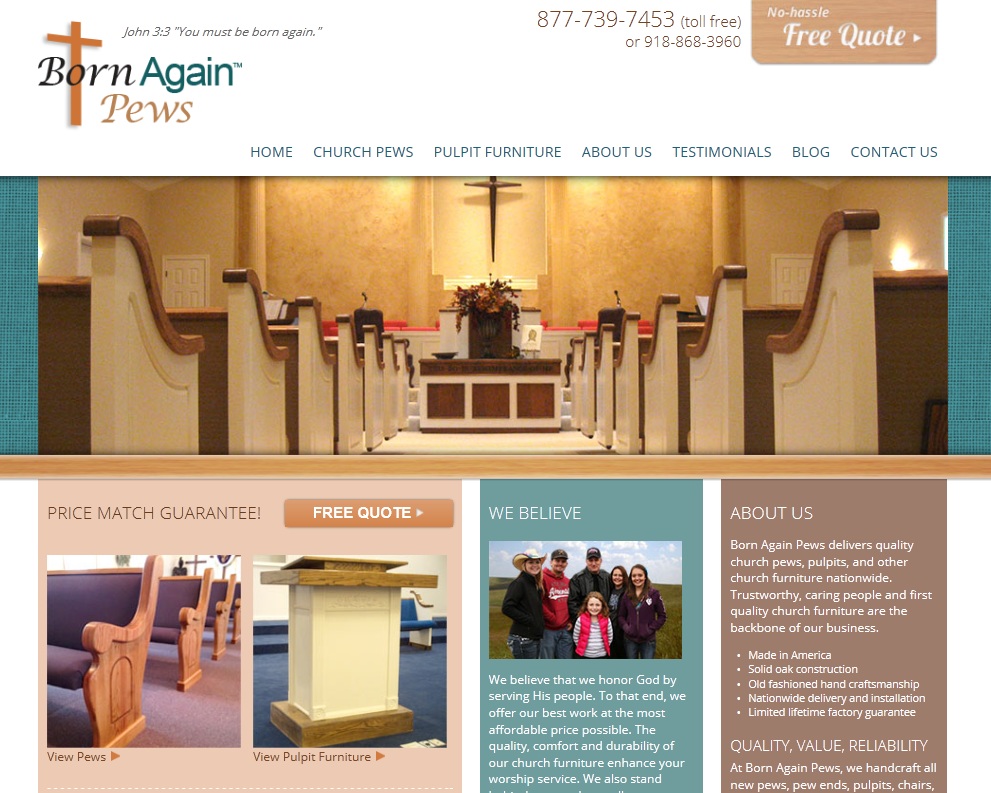You know the rotating gallery or slider you plan to have on your new website or to add to your current one? Is it a bad idea from the point of view of SEO?
Like so many other things, it depends on how you do it.
Search engine optimization is all about communicating well with search engines. The screenshot here shows the planned homepage for a new website we’re working on. Like most of the sites we build these days, it contains a slider.
Sliders, or rotating banners, galleries — whatever you like to call them — have some real advantages on a website homepage. You can show more pictures above the fold. They’re usually easy to change out so you can feature things, including new things you hadn’t thought of when you built the site in the first place.
However, those banners are often just images with no information available to the search engines.
You think your beautiful images and compelling banner ad copy will wow your visitors, but your visitors may not be able to find you in the first place. You can use the Lynx viewer to see just how much of your banners search engines can see and read. On our website here at Haden Interactive — nothing. Our slider, like many sliders, is invisible to search engines.
That’s okay for us (though probably not optimal) because we have 1200 pages of original, relevant content, plus a clear statement of who we are and what we do on our homepage. If you have only your slider and your logo on your homepage, plus four more pages of unoptimized content with vague titles in the navigation bar, you have nothing for the search engines.
We can add searchable text to our slider, and you might be able to do the same. We use the same slider at our lab site, FreshPlans, and the screenshot at right shows you how the current banners look to a search engine.  Depending on the technology used to create your slider, you may find that all of your banners are visible to the search engines at once, as ours are at FreshPlans, or that only one is visible, or that they are entirely invisible. It’s worth discussing with your designer.
Depending on the technology used to create your slider, you may find that all of your banners are visible to the search engines at once, as ours are at FreshPlans, or that only one is visible, or that they are entirely invisible. It’s worth discussing with your designer.
In the design in the screenshot, we’ll have searchable text for the banners — but we also have several hundred words of relevant text on the page. With more good content on the internal pages and an optimized blog, the site will be good at telling the search engines about itself.
At its simplest, your slider can be the equivalent, from the point of view of the search engines, of a picture. That’s okay, as long as you have plenty of words with it to communicate with the search engines. If your heart is set on a design that relies on banners for copy, make sure the copy is searchable.
If your banners are searchable, make sure you keep that in mind as you change them in the future. The current banners at FreshPlans generally contain words like “classroom,” “lesson plans,” and “study,” which help search engines grasp that it’s an educational website. “Resources for Hispanic Heritage Month” wouldn’t do much on its own, though, would it? If only one of your banners shows on your homepage when search engines look at it, make sure the text for that banner does its job.
Are sliders bad for SEO? They can be, if you forget the difference between what people see and what search engines see. If you keep that in mind, though, they can be beneficial or harmless to your overall SEO strategy.
(Don’t have an overall SEO strategy? Give us a call at 479.966.9761 and let us help.)


Leave a Reply